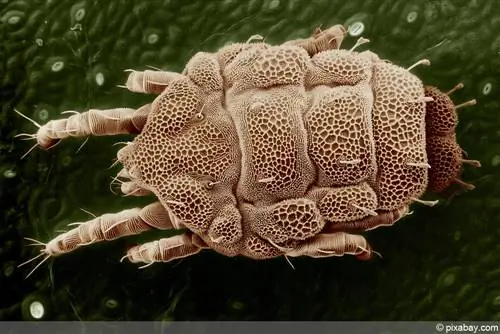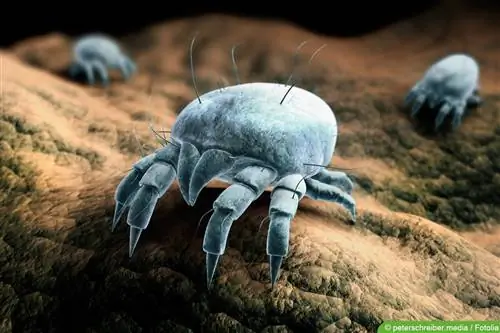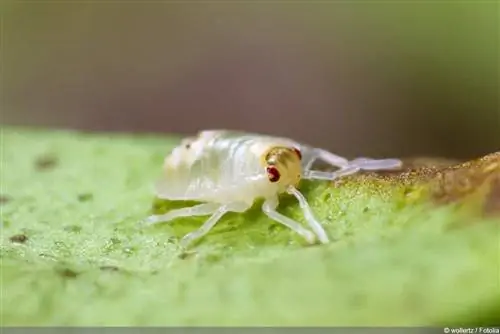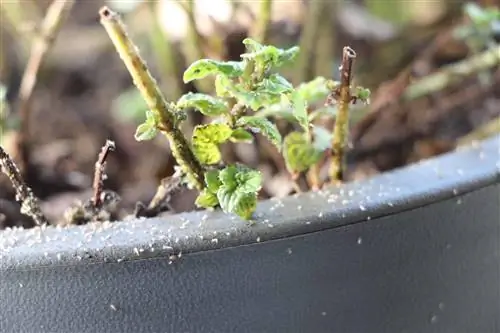- Author admin [email protected].
- Public 2023-12-17 03:39.
- Last modified 2025-01-24 12:45.
Even a tiny little animal can cause a lot of damage. This may also be because one of them rarely comes alone. The spider mites multiply extremely quickly. If not stopped in time, things can end badly for the affected plant. Another small animal, the predatory mite, can hunt for this pest for us.
What are spider mites?
Spider mites are particularly small arachnids. They are round and just about the size of the head of a pin. They are hardly visible to the naked eye. This is partly due to its mini size and partly due to its inconspicuousness. They are yellow-green in color and have only two small, dark spots on their backs. This appearance is a good camouflage because they are hardly noticeable on the green undersides of leaves. Only when you look carefully and closely do you see them crawling back and forth and discover their fine webs. Only when the ambient temperature drops or the spider mite is hungry does its color change to reddish brown. This shade of red has also given it the name red spider in everyday language, by which it is mostly known. It is also called common spider. There are a total of over 120 species of spider mites, most of which attack crops and ornamental plants.
What damage do spider mites cause?
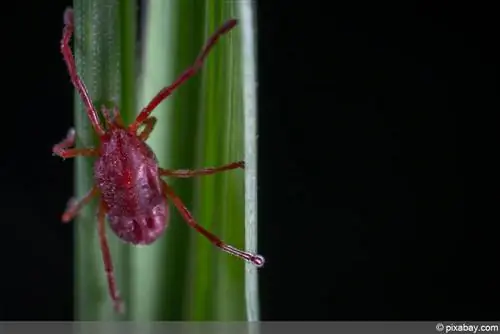
For spider mites, the underside of plant leaves offers access to nutritious treasures. They pierce one cell after the other and suck out the lifeblood until it is completely empty. The emptied cell fills with air. Together with neighboring empty cells it is perceived as a bright spot. As this area gets larger, it shimmers slightly silver. Cell by cell, the green leaves lose their natural color, eventually turn brown and eventually die. Unlike an aphid infestation, there is no sticky coating. This is because they do not suck the sugary plant sap. However, they form a very fine web on the underside of the leaves, which continues to spread as the infestation progresses. Finally, the spider web can even envelop the entire plant.
Note:
The fruit tree spider mites are an exception; they hardly form webs.
What conditions do spider mites like?
Dry and warm air is the ideal environment for spider mites. Particularly in winter, dry heating air promotes their explosive proliferation. They then often attack houseplants. It therefore makes sense to regularly check the leaves of all plants for spider mites in winter. If the plants are close together in their winter quarters, the spider mite moves effortlessly from one plant to the next.
In summer, the spider mite also appears outdoors in dry and hot weather. If there are many warm and dry days in a row, you should keep an eye on your plants and regularly inspect the undersides of the leaves for spider mites.
Which plants are affected?
Spider mites are not food lovers. They have been spotted on almost every plant. However, just like us humans, spider mites have favorite foods that they particularly often eat. Cucumber and bean leaves are often vacuumed in the garden. On hot summer days, fruit trees also have to expect visitors. When it comes to houseplants, citrus plants are very popular with spider mites.
Disadvantages of chemical control
Spider mites go through different stages of development until an egg becomes an adult spider mite. During a rest period between two stages, their food intake is restricted. At such a stage they are difficult to control because they do not absorb the insecticide substances that are toxic to them in sufficient quantities. The treatment must therefore be repeated several times for it to be successful. This, as well as the harmfulness of chemical substances for the cycle of nature, is causing more and more gardeners to look for other, organic alternatives. Predatory mites are one such alternative.
What are predatory mites?
Predatory mites are also small arachnids that, at around 0.5 mm in size, are about the same size as spider mites. Its body is pear-shaped and yellowish to reddish-brown in color. Predatory mites pose no danger to our plants at all because they do not suck out their plant sap. They are interested in the spider mites, which serve as their food. That's why the predatory mite is a natural enemy of the spider mite, which makes it a beneficial insect for us humans.
This is how predatory mites help against spider mites
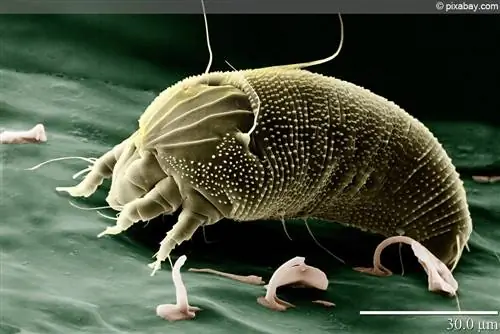
Predatory mites pierce spider mites with their mouthparts, suck them out and thereby effectively destroy them, regardless of what stage of development the spider mites are currently in. They suck on their eggs, larvae and adult spider mites. They are extremely voracious and quick at work. A predatory mite can eat up to 20 spider mite eggs or five adult spider mites in a single day.
Predatory mites only need about seven days to reproduce under favorable conditions. This means that their development is twice as fast as that of spider mites, so that they quickly gain the upper hand. The decimated population of spider mites can no longer cause much damage. The affected plants recover.
What conditions do predatory mites like?
Unlike spider mites, predatory mites do not like dry air. They prefer high humidity. If this is very low, their eggs dry out before the new predatory mite can hatch. They are therefore naturally unlikely to be found in particularly dry rooms. In the event of an infestation of spider mites, which often occurs in dry air, they must therefore be specifically “released” into the environment. To do this you first have to get possession of these little animals.
Buy predatory mites
If you haven't started breeding your own, you can order predatory mites online. Different types are offered. The best known are the predatory mites Phytoseiulus persimilis, which destroy spider mites like on an assembly line from around 25 degrees Celsius and 60% humidity. They are well suited for use in winter gardens and greenhouses.
The predatory mite Ambyseiulus cucumeris is somewhat less voracious, but also less demanding when it comes to temperature and humidity. It is therefore well suited for preventative use in rooms.
Predatory mites are delivered with a parcel service. They are packed in a special container with suitable granules or bean leaves. This means they survive the transport unscathed and have enough food along the way. How many predatory mites you need depends on the size of the infested area. If the spider mite infestation is still in its early stages, 20 predatory mites are expected per square meter of area. The best thing to do is to inquire about prices and delivery units from the various providers in advance.
Breed predatory mites yourself
Some species of predatory mites can easily be grown at room temperature. Typhlodromus pyri is a suitable species. For this you need some sealable 0.25 l plastic jars, some plaster of paris and activated carbon. You also need some predatory mites and pollen as food.
- Mix the plaster with a little activated carbon.
- Pour the plaster mixture into the cans, about a third deep.
- Let the plaster dry out thoroughly.
- Put fine holes in the lids of the cans.
- Now you can put the mites in the cans.
- Use a brush to add some pollen as food.
- Close the cans with the lids.
- Feed once or twice a week.
- If the activated carbon has faded, you need to add some water. The easiest way to do this is with a pipette.
Tip:
Instead of pollen, predatory mites can also be fed with live food, e.g. B. with curl mites or leaf mites.
When is the use of predatory mites promising?

There are several factors that determine the success of this natural pest control.
- act in the early stages of the infestation
- Use predatory mites in sufficient numbers
- Release predatory mites immediately after delivery
- different species require different conditions
- Observe instructions from breeders/suppliers
- apply the beneficial insects directly to the leaves of the affected plants
- ensure good humidity
- if applicable After about seven days, add a new “portion” of predatory mites
Tip:
The humidity can be increased regularly and easily using a high-pressure hose. A fine gland creates a mist in the air.
If the infestation is already very advanced and numerous webs can already be seen, it is already too late for this biological control method. That's why it's a good way to use predatory mites as a preventive measure in the spring, when the spider mites wake up from their hibernation. The newly hatched spider mites are prevented from spreading right from the start. This approach is particularly recommended when plants are being cultivated on a larger scale. If these are also the spider mites' favorite plants, early planting could secure the harvest.
Note:
Chemical control agents such as fungicides and insecticides are harmful to predatory mites and should not be used in parallel.

